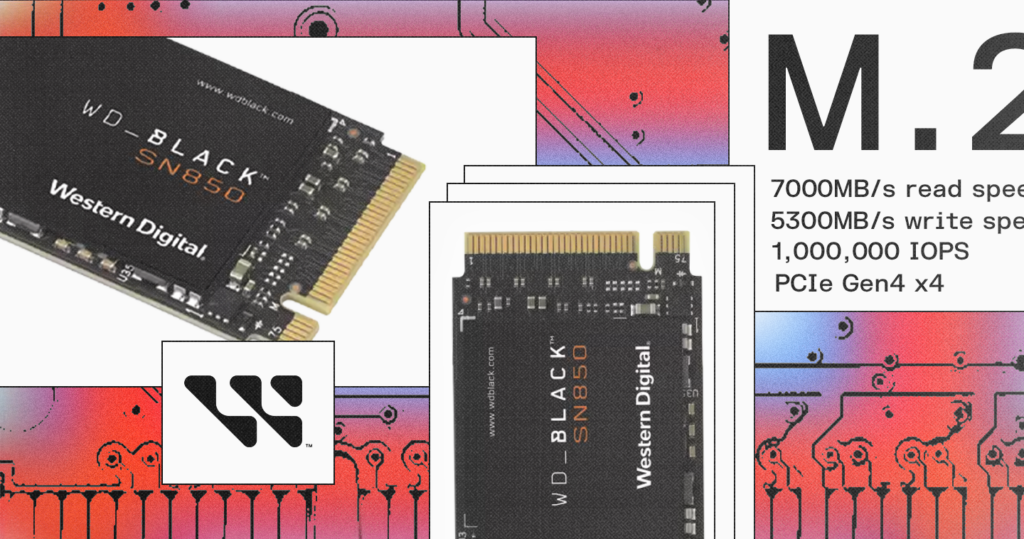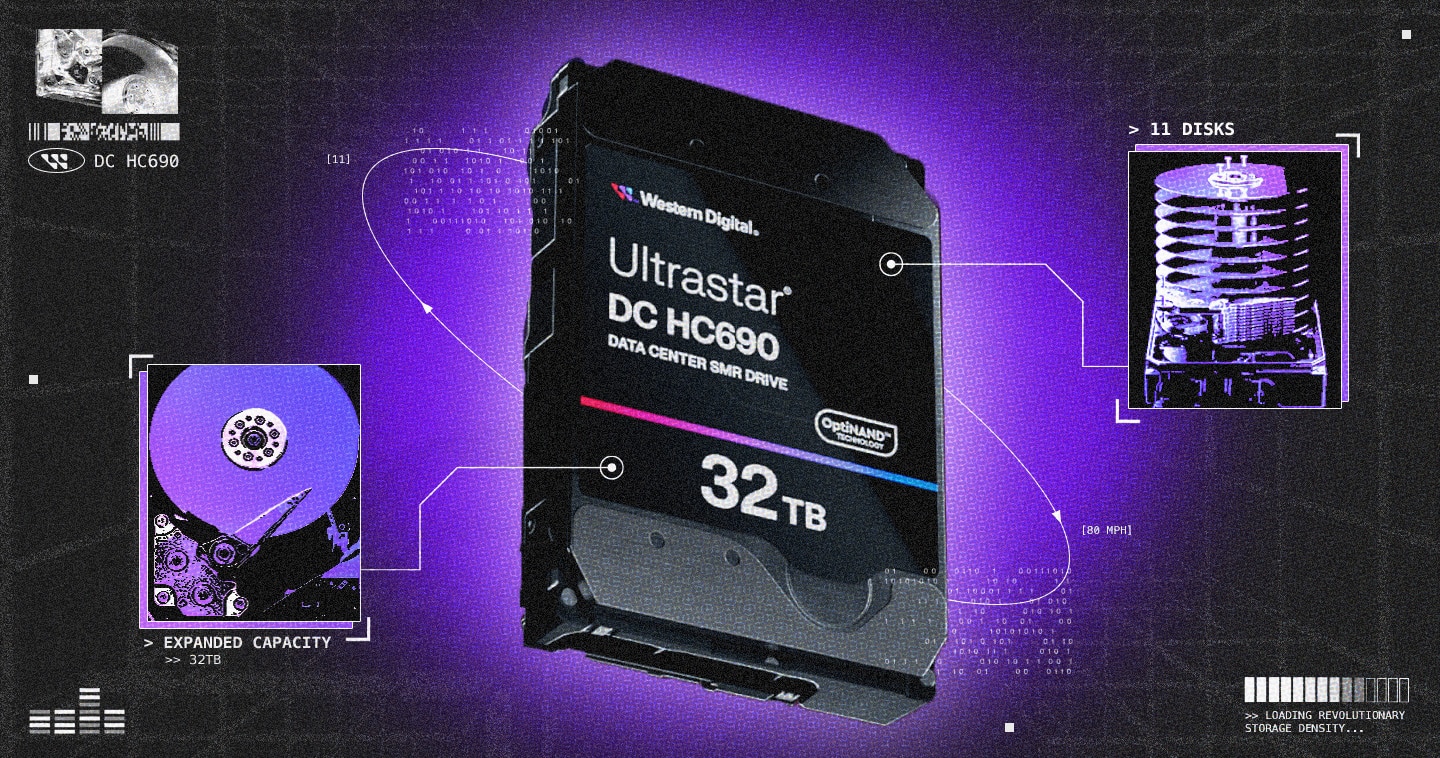M.2 SSD: The Form Factor of the Future, Today
Flash memory comes in all shapes and sizes thanks to the power of semiconductors and NAND wafers. This flexibility inspired many form factors, from flash drives to SD cards, to push storage forward. The M.2 SSD (pronounced m-dot-two) became one of the most prolific form factors on the market, thanks to its unparalleled speed and slim size.
What are M.2 SSDs?
When solid-state drives and flash memory were first introduced, engineers were still nailing down the best ways to take advantage of the new technology. Because of this, the initial SSDs inherited the form factor and size of hard disk drives in order to integrate and replace drives in existing computer systems.
“The first SSDs, based on SATA, were created with the same form factor as an HDD,” said Yuval Alpert, director of SSD product management at Western Digital. “The same 2.5 inch case and the same cable connections.”
Over time, though, engineers got a better understanding of the burgeoning technology and began to think outside of the 2.5” inch box. Flash is remarkably malleable, meaning it can take on nearly any shape or form. The industry realized there was no need for SSDs to be chained to a boxy form factor and, simultaneously, wanted to create a new kind of drive that took advantage of the unique properties of NAND.
Enter the M.2: a drive about the size of a stick of gum, screwed directly into a socket on the motherboard of a PC, aptly named the M.2 connector slot. Originally, it was released with the old SATA interface to reduce the size and weight of the bulky HDD form factor.
The new form factor then enabled engineers to break beyond the limitations of the SATA interface and 2.5” form factor heritage. M.2 enabled the flash memory to tap into its innate speed via new protocols and interfaces, particularly PCIe and NVMe. Today, M.2 drives perform as high as 12 times faster than SATA-based SSDs, by tapping into the parallel nature of NVMe and PCIe Gen 4.
“Today, there is a transition to higher performance interfaces, namely PCIe and NVMe,” said Alpert. “What’s good about PCIe vs SATA is that PCIe enables higher throughput parallel lanes, whereas this is limited in SATA, enabling the computer to take advantage of the unique capabilities of flash storage.”
What is it good for?
Primarily, M.2 SSDs were designed with ultrabooks and tablets in mind, and they are perfect for the job. The smaller, thinner footprint of the M.2 drive is crucial for devices that place a premium on size, weight, and mobility. Fitting directly onto the motherboard without the use of cables also frees up space for other components.
“[In most] laptops today, you can’t even fit in a 2.5” drive anymore,” Alpert said, “[M.2] is much smaller than the 2.5” form factor. PC designers can use the same real estate for other components, like a larger battery, more cooling, or additional storage.”
Video games, too, benefit from M.2 SSDs because of their superior performance and smaller size. From the production side, faster storage means machines can load and render bigger, more detailed assets, like textures and shaders, faster. This opens up more room for creativity and expression for talented artists and programmers to craft immersive, seamless worlds with vibrant detail.
For the players, the form factor is a more practical boon. As video games balloon in size —upwards of 100GBs — SSDs are more important than ever. M.2 SSDs offer better performance than their SATA predecessors, and gaming PCs also benefit from the real estate freed up by the smaller M.2 drive. Streamers and eSports pros alike require immense amounts of processing power to do their work, and space for additional GPUs, RAM, and especially cooling systems can be invaluable.
The M.2 form factor is very malleable and can be applied to flash products for industrial purposes. Products designed for autonomous vehicles or high-durability solutions for IoT Edge Gateways benefit from the speed, power consumption, and size of M.2 SSDs to create new possibilities.
Innovations
While Western Digital delivers M.2 excellence across its brands and products, its role in M.2 innovation began with the founding of the M.2 standard. Before the company’s portfolio included M.2 solutions for laptops, tablets, workstations, cars, and more, it worked with PCI-SIG, a consortium of over 800 companies, to standardize the approach of peripheral component interconnect (PCI) technology, such as PCIe (PCI Express).
As a member, Western Digital advised the development of the M.2 standard, leveraging its storage expertise to ensure the new form factor was designed with the future in mind; its shape is intended for ultra-thin devices, with read and write speeds fast enough to facilitate the future of big data.
The company continues to work closely with OEMs, addressing contemporary challenges like remote work, to craft drives that unlock the potential of data. Video calls, virtual private networks, and multitasking with demanding applications are the norm for the evolving workplace, and M.2 ensures that laptops can keep up with the speed of technology and business.
Western Digital has cemented itself as a leader in M.2 products. Fast Company recently named the company a top 10 innovative company in the gaming industry for its WD_BLACK products. The company’s WD_BLACK SN850X, its latest purpose-built gaming drive, is a prime example of what’s made WD_BLACK an industry leader: breakneck gaming speeds, sustained top-end performance, and in-house SSD heatsink design. The company leverages its vertical integrations of flash manufacturing alongside technical expertise and strong relationships with video game developers and PC manufacturers to maintain its leadership position with M.2 development.
The Future of M.2 SSDs
Looking to the future, though, M.2 SSDs will be for more than just the flashy gamer or the ultra-thin laptop. In Alpert’s eyes, the M.2 is already ubiquitous.
“Let’s face it, the M.2 is widely adopted,” he said, “practically, all new PCs are designed today with an M.2 slot. New PCs are sold with either NVMe SSDs with M.2 form factor or HDDs. The old SATA SSDs are being phased out.”
Ninety percent of the world’s data was created in the past 2 years, and to meet the awesome demand for data storage, every kind of storage drive and technology has a part to play. But, between the blazing speeds and accommodating size, it’s easy to see why the M.2 has become so ubiquitous.
“It’s the workhorse of flash storage. Unless you’re looking for storage for the data center, M.2 is the solution. It’s for any consumer use case that needs fast, compact flash memory,” Alpert said.
“M.2 is the standard form factor of consumer SSDs.”




